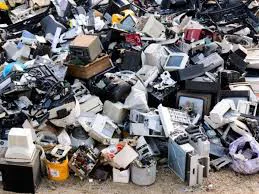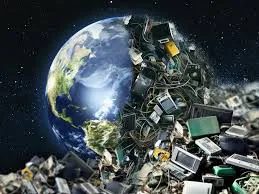When you purchase through links on our site, we may earn an affiliate commission. This doesn’t affect our editorial independence.
Kenya is set to ban the importation of electronic and electrical devices that are older than 12 years from their date of manufacture. This is included in a proposed regulation by the National Environment Management Authority (Nema).
The array of electronic gadgets that will be impacted consists of televisions, refrigerators, computers and smartphones. Also, the list includes various household and industrial appliances.
The initiative is presented as a public health and environmental strategy. It is aimed at reducing the increasing arrival of used or nearly obsolete devices that frequently come as refurbished products. Kenya imports around seventy per cent of its electronic devices, a significant portion of which is near obsolescence upon arrival.
The proposal would represent one of the most extensive interventions to date in Kenya’s consumer electronics market. The country is applying the same principle that regulates vehicle imports. Vehicles older than eight years are banned from entering the country.
Making a Compromise
Kenya’s thriving used electronics market has consistently filled a void created by the high cost of new items. Refurbished computers, phones, and televisions provide millions of low-income families with access to essential digital technology. However, the low cost results in a drawback. The gadgets often have brief lifespans, outdated software, and components that are challenging to replace or recycle.
Nema estimates that Kenya currently produces more than 50,000 tonnes of e-waste (electronic waste) annually, with an increase of up to 12 per cent each year. Merely a small portion of that waste is recycled correctly. The remainder is taken apart in unofficial scrap yards. Uncoupling these gadgets is frequently done by hand, releasing lead, mercury, and cadmium into the atmosphere and soil.
The health effects are significant. Exposure to e-waste has been associated with cancers, respiratory illnesses, congenital anomalies, and developmental issues in children. The government’s proposed regulations present the ban as both an environmental measure and an essential public health requirement.
Inspired by the Earlier Car Ban
Kenya’s vehicle import regulation—prohibiting cars older than eight years. The law has inspired this move on electronic devices. Public officials and experts have drawn attention to the strain those imports impose on disposal systems.
“Nema’s impact assessment report states, ‘Ban the import of electronic and electrical equipment older than twelve years from the manufacturing date (excluding heritage or museum pieces).’” The document references guidelines from the United Nations Environment Programme (UNEP) that establish a ten- to twelve-year period as the point when replacement is more effective than repair.

Image source: Shutterstock
Through the integration of the regulation into customs processes, the Kenya Revenue Authority (KRA) and the Kenya Bureau of Standards (KEBS) would collaborate to examine arriving shipments. Clearance will be withheld until Nema provides a compliance certificate, ensuring that no non-compliant electronics reach the market.
See Other Posts on this Site
Nigeria’s Rate of AI Adoption Exceeds Global Average, Says Report
Nigeria’s Inverter Market: A National Security Trojan Horse?
Conforming to International Standards
Kenya’s suggested framework is largely based on examples from other countries in Africa and Asia. Rwanda implemented its e-waste regulation in 2016, prohibiting the disposal of computers that are over eight years old. It also bans refrigerators that are over ten years old, amongst other items. In five years, non-functional imports decreased from almost fifty per cent of all shipments to under twenty per cent.

Image source: Shutterstock
Spotlighting Nigeria
Nigeria also bans electronics that are over fifteen years old, but lapses in enforcement have weakened the impact.
For Kenya, the strategy features a digital database of importers, serial numbers, and testing outcomes to monitor adherence and pinpoint habitual violators.
The authorities aim for the stricter regulations to align Kenya with global e-waste benchmarks, especially those of the European Union, where import limitations and producer accountability programs have significantly decreased unlawful disposal.
Functionality as the New Benchmark
The rules extend beyond age restrictions. They established thorough performance tests to guarantee that imported electronics in Kenya are truly operational, not nearly obsolete inventory.
Computers, laptops, and tablets should start up within three minutes, maintain at least seventy per cent of their original processor speed, have operational ports, and charge to at least sixty per cent of their designated capacity. Phones should maintain a minimum of 50% battery life, feature unbroken screens, and possess an IMEI number that is not flagged for theft.
The evaluations for appliances are just as particular. Refrigerators should use no more than one and a half times their initial rated power. In contrast, small devices, such as irons or blenders, must not have visible wiring or excessive heat. Televisions and cameras must retain a minimum of 90% of their original pixel performance and operational remote controls.
Anything beneath those limits will be classified as e-waste and prohibited from entry.
Balancing Protection and Accessibility
Nonetheless, the regulations confront a challenging economic situation. For numerous families, used electronics are not merely a choice but the sole economic alternative. Analysts caution that the prohibition might raise prices overall, especially for refurbished computers and smartphones that are prevalent in informal markets in Nairobi and Mombasa.
The government recognises this strain. The proposal permits second-hand imports that pass rigorous functionality tests, provided they are accompanied by clearance certificates.









